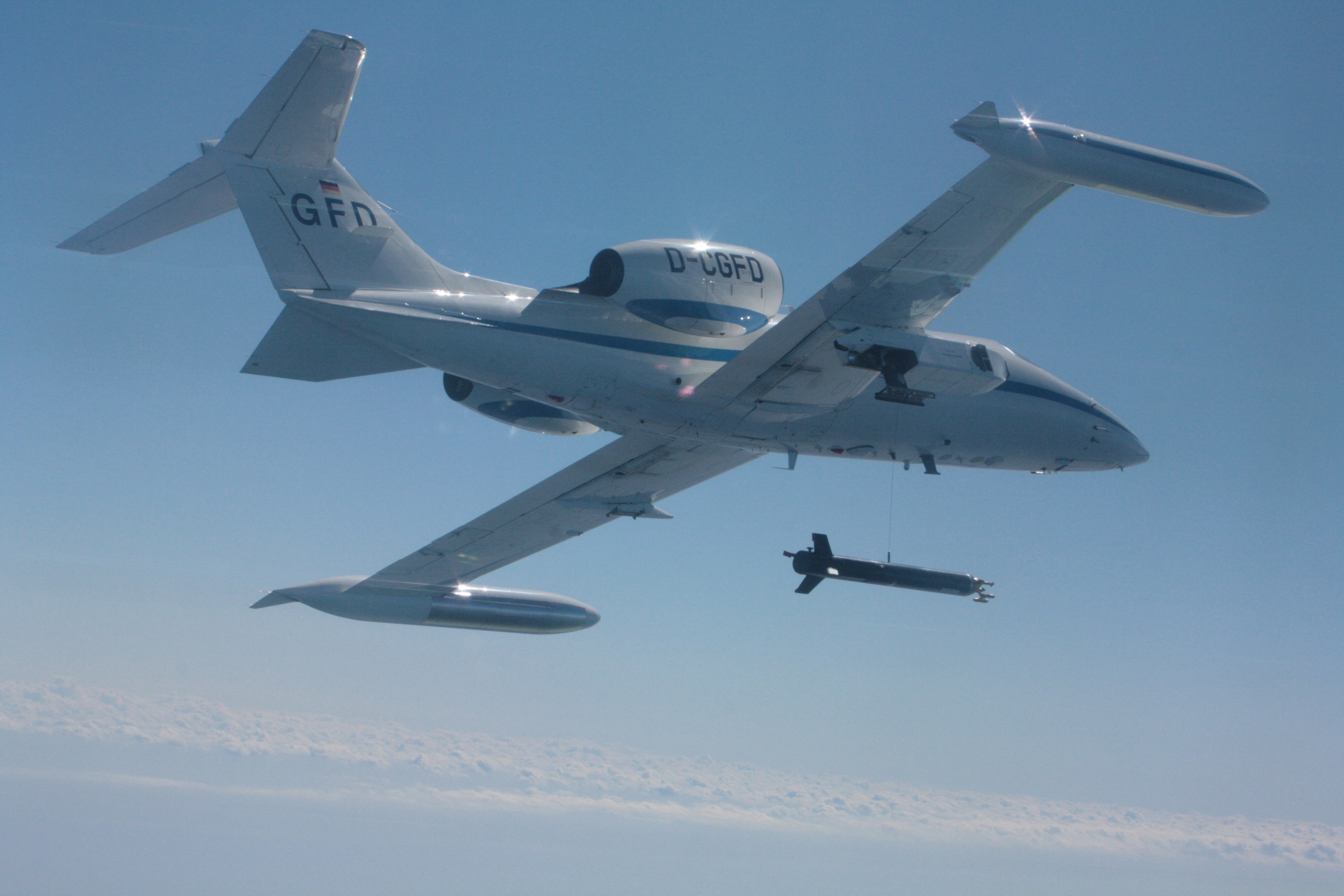The AIRTOSS Project
A tandem approach for collocated measurements of microphysical and radiative cirrus properties

Introduction
We have developed and implemented a novel approach to measure the microphysical and radiative properties of cirrus clouds, using the AIRcraft TOwed Sensor Shuttle (AIRTOSS) in combination with a Learjet 35A research aircraft. Our tandem platform allows for simultaneous observations from different altitudes, overcoming the limitations of single aircraft approaches that often suffer from temporal displacement issues. This setup enables us to investigate the variability and inhomogeneity of cirrus clouds, which play a crucial role in Earth's radiative budget.
Methodology
The AIRTOSS is a sophisticated sensor pod towed behind the Learjet at a distance of up to 4,000 meters, equipped with instruments that measure cloud microphysical properties and radiation. This platform was used in the AIRTOSS-Inhomogeneous Cirrus Experiment (AIRTOSS-ICE), where we conducted ten flights over the North and Baltic Seas. We measured cirrus clouds formed in various weather conditions, including frontal and anvil outflow cirrus. Our data provides detailed insights into particle size distributions and irradiance profiles at different altitudes, highlighting the heterogeneity within cirrus layers.
Key Findings
Through our measurements, we observed significant vertical and horizontal inhomogeneities in cirrus cloud properties. We discovered that particle sizes decreased with altitude, consistent with diffusional growth being the dominant microphysical process. Our radiative measurements also showed variability in solar irradiance within the cloud, reflecting its heterogeneous structure. Additionally, we demonstrated that the collocated measurements using the tandem approach significantly improved the accuracy of derived solar heating rate profiles, compared to single-platform approaches.
Conclusion
Our tandem platform offers a powerful tool for advancing the understanding of cirrus cloud dynamics and their impact on the Earth's climate system. The success of the AIRTOSS-ICE campaign shows that collocated measurements from a single aircraft platform are feasible and can yield more accurate data on cloud microphysics and radiation. We believe that future applications of this technology will enhance atmospheric research and help refine climate models.
This summary is based on the publication: Klingebiel, M., Ehrlich, A., Finger, F., Röschenthaler, T., Jakirlić, S., Voigt, M., Müller, S., Maser, R., Wendisch, M., Hoor, P., Spichtinger, P., & Borrmann, S. (2017). A tandem approach for collocated measurements of microphysical and radiative cirrus properties. Atmos. Meas. Tech., 10, 3485–3498.